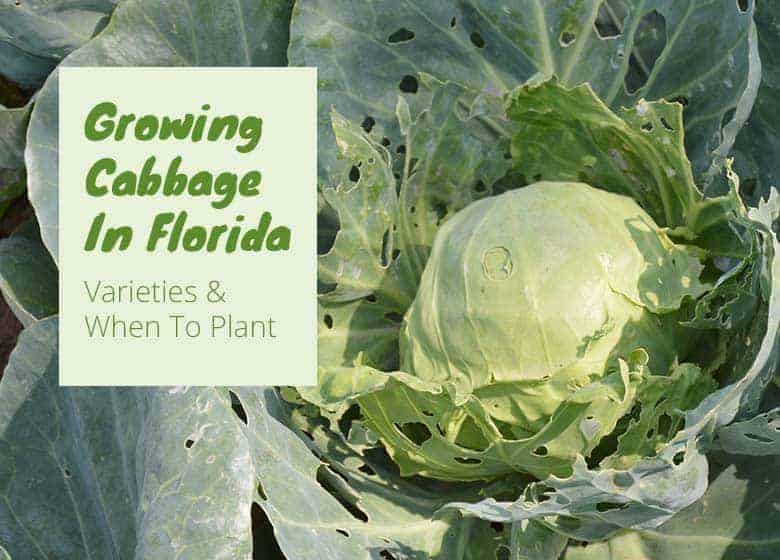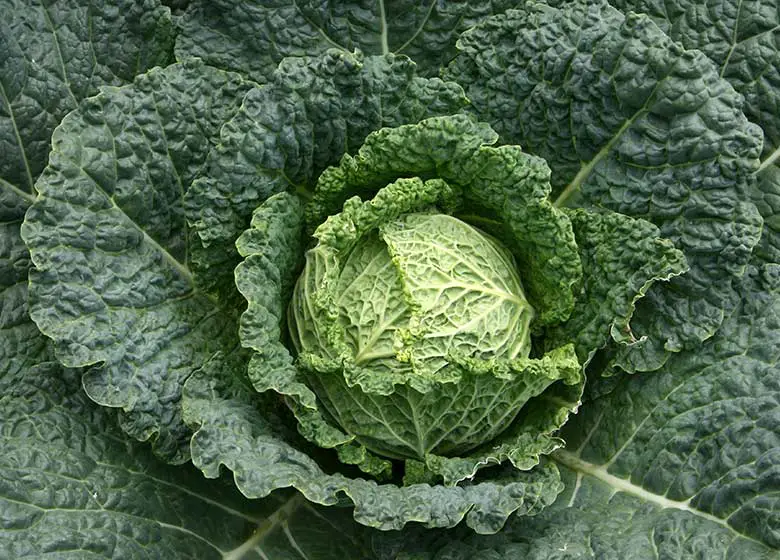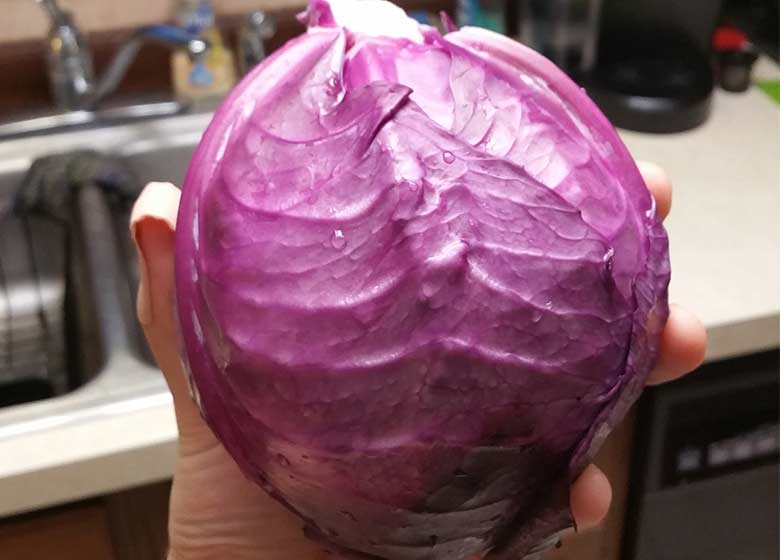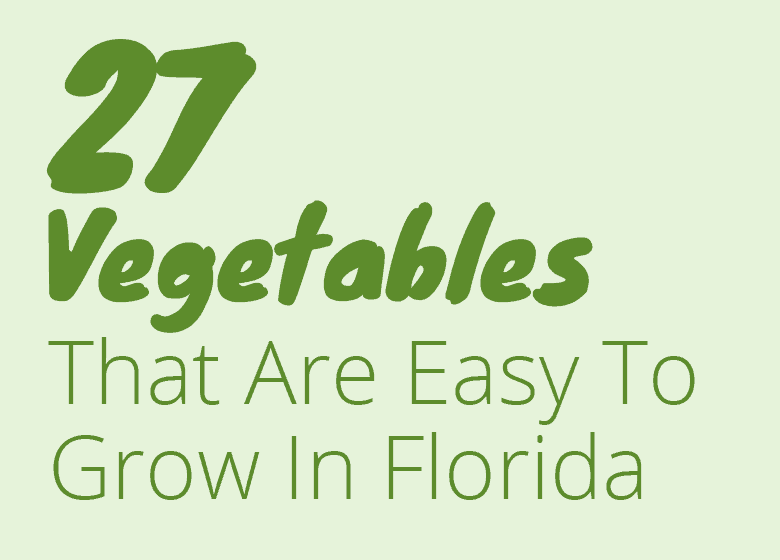
Is it too hot to grow cabbage in Florida?
Cabbage needs to be grown during the cooler months in Florida. Cabbage needs to be planted around the month of September to grow best in Florida. Plant varieties like Copenhagen Market, Flat Dutch, Red Acre, Rio Verde, Round Dutch, Savoy, and Wakefield types.
Cabbage may be one of the easier vegetables in the brassica family to grow. Like it’s relatives, broccoli and brussels sprouts, cabbage also needs cool weather.

When To Plant Cabbage In Florida
The ideal temperature for cabbage to grow is around 65°F. Those in South Florida have a very small window of ideal growing time.
Cabbage can take temperatures of up to 80°F but it begins to bolt when temperatures rise and the quality of your cabbage will go down.
- North Florida: Aug – Feb
- Central Florida: Sep – Feb
- South Florida: Oct – Jan
North Florida will probably have the easiest time growing cabbage. They have the coolest weather and longest ideal conditions for cabbage. I’ve grown cabbage very successfully in central Florida as well.
With cabbage, it’s also a good idea to spread out planting by a few weeks. If you plant a few seeds in the begining of September, you should probably plant a few more seeds two weeks later.
This will spread out your harvest and will help you to avoid having 5 cabbage heads all ripe at the same time.
Cabbage plants also do very well as transplants.
Florida Friendly Varieties Of Cabbage
- Baby Pixie
- Bobcat
- Copenhagen Market
- Flat Dutch
- Red Acre
- Rio Verde
- Round Dutch
- Savoy
- Wakefield types
I’ve personally grown the red acre variety in central Florida and had pretty good luck with it. It grows as a deep purple color and looks beautiful when you cut it open.

There are many other varieties of cabbage that will grow in Florid. But look for ones that are quick maturing because we don’t have a long window for growing cabbage.
The baby pixie and Bobcat varieties grow a little smaller than the rest on this list and they are great options for containers or limited space gardens.
Growing Cabbage In Florida
Cabbage needs full sun and lots of moisture with well-draining soil. If you’re planting directly into your Florida soil be sure that you add plenty of compost and a thick layer of mulch at the very least.
Mulch goes a really long way in helping your plants retain moisture. Florida soil is usually pretty sandy and needs all the help it can get in when it comes to retaining moisture.
If you are planting in a raised bed or into a container you have the greatest opportunity to have perfect soil. Whenever I plant veggies into containers I like to use a mix that looks something like this:
- 40% Coco coir (Check price on Amazon)
- 40% Compost (You can get it on Amazon but I’ve found it way cheaper at local stores)
- 20% perlite (Check price on Amazon)
- Worm castings (Check price on Amazon)
- Mykos (Check price on Amazon)
You can use pet moss instead of coco coir if you want. It’s cheaper but not so great for the environment. I like the worm castings for an extra nutrient boost and the mykos to promote healthy fungi in your soil.
Water your cabbage regularly and be sure to pull weeds. Cabbage really likes water and weeds will fight it for that.
Cabbage plants need about 1.5 – 2 feet of space all the way around in order to grow properly.
Fertilizing Cabbage
Cabbage is a plant that enjoys a fertilizer that is high in nitrogen. There are three different numbers on mos fertilizer bags.
These are the N-P-K values. Each nutrient does something different for your plant. Nitrogen(N) helps your plant make green leafy growth. Phosphorus (P) helps your plant bloom and Potassium(K) is a good overall health booster.
My favorite nitrogen focused fertilizer is a water-soluble fish fertilizer (Check price). You can pick this up at most local hardware stores. There is one major downside to this fertilizer though. It smells absolutely awful! The plants love it though!
Harvesting Cabbage
Cabbage plants take their time to produce. They usually ake about 85-110 days in order to be harvested.

When you harvest cabbage you want the head to be firm all the way through. Just because the head has been formed on the plant it does not mean that it is ready to pick. It may be really soft and loose on the inside.
The easiest way to tell if your cabbage is ready to harvest is to give the head a good squeeze. If it feels firm all the way through then it is time to pick. Cut the head of the cabbage from the base of the plant.
Cabbage Problems
The biggest problems you will see with cabbage are worms that eat your plant and black rot.
The best way to avoid problems with cabbage is to stay on top of watering, fertilizing, and weed pulling. Keeping a clean garden and a well-fed plant is a key to having a good harvest.
Another best practice to growing anything in the garden is to have a diverse garden. Plant herbs and flowers in with your veggies and you will be repaid with a healthy and beautiful garden.
Find out what to plant to attract beneficial bugs to your garden and have a healthy garden
Sometimes problems do just pop up. If you start to notice worms on your cabbage, a solid spray of B.t. will knock them out. You may also see cutworms that will kill your seedlings before they even get going.
A cutworm is a small worm that will eat your seedling straight through the stem at the soil level. You can easily prevent this from happening by taking an old toilet paper roll and placing it around your seedling until it’s big enough to fight off the danger of a cutworm.
Black rot can affect any plant in the brassica family, It’s yellowing and browning of the leaves in a v-shaped pattern. It causes the cabbage head to have little black rotten spots on it that will eventually lead to the whole head rotting.
How To Grow Cabbage In Florida
- Plant Florida friendly varieties of cabbages like Copenhagen Market, Flat Dutch, Red Acre, Rio Verde, Round Dutch, Savoy, and Wakefield types
- Plant cabbage in Florida around September. The earlier the better.
- The ideal temperature for Cabbage to grow is around 65°F so South Florida will have the most difficult time growing.
- Cabbage takes 85-110 days in order to be harvested
- Plant in a well-drained soil in a spot that gets at least 8 hours of sun.
- Fertilze with a nitrogen focused fertilzer.
- Look out for worms and black rot.
You will Probably Also Like:



